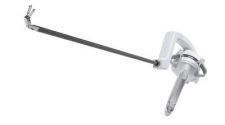The Nintendo Switch is selling amazingly well – so well, in fact, that Nintendo is struggling to keep pace with demand after more than three years from launch. Switch sales up are up 95% in the first half of the current financial year, and that has seen Nintendo’s share value rise 30% in 2020 alone.
Much of the current confidence in Nintendo stock is down to the Switch’s astonishing success, but in the eyes of more cautious investors, the firm is now at something of a crossroads; the Switch isn’t going to be around forever, and the circular nature of the video game hardware arena means there’s the risk that the Kyoto-based veteran could fumble its next machine, just as it did with the Wii U, which followed-on from the insanely popular Wii.
However, there are some which believe Nintendo has learned its lesson and that instead of creating an entirely new hardware platform, it will follow Apple’s iPhone model by simply upgrading the Switch and keeping players firmly rooted in its current software ecosystem.
Speaking to Bloomberg, Toan Tran of investment manager 10 West Advisors said:
With every console generation, the install base resets to zero and their earnings power essentially resets to zero. They can continuously have an install base of say 100 million consoles out there, that just moves along over time.
The logic is sound – by keeping people tied to the Switch, Nintendo can ensure that its consumer base remains reasonably consistent. Players will benefit from having their entire library on-hand for years to come, and won’t have the added cost of having to purchase new software when a brand-new system is released.
However, this approach does fly in the face of Nintendo’s desire to create new and innovative consoles; no other hardware maker has been as active in this regard. Nintendo is behind machines like the motion-sensing Wii, the touch-based DS, the 3D-powered 3DS and the Virtual Boy. While not all of the company’s hardware experiments find a wide audience, the firm has a history of tearing up the rulebook and starting over with each subsequent hardware cycle – and that’s why investors are uneasy.
Nintendo’s share value recently passed through the 50,000 yen barrier and could overtake the all-time high marker of 73,200 yen, but there’s always the worry that another Wii U could be around the corner, bringing that value down to earth and losing investors a lot of cash.
However, Ryan O’Connor, portfolio manager of Kansas City-based investment firm Crossroads Capital, agrees with Tran’s assessment that Nintendo has gotten wiser over the past few years. He tells Bloomberg that the Nintendo of today is different from the company that existed pre-2017, and he feels that the Japanese firm has given enough indication that it’s looking to establish a perpetual platform rather than kick-start a new hardware cycle with its next system.
Nintendo is reported to be working on an upgraded Switch for release next year, but that doesn’t necessarily mean the company is going to stick with the concept long-term – it has traditionally refreshed its portable hardware in the past, hence the fact we have the Game Boy Color, GBA SP and New Nintendo 3DS. It has also stated that its next hardware platform will be much like its previous ones and that it “still plans to expand its business around the creation of unique integrated hardware-software products” that create “a positive cycle” and forge “positive long-term relationships and increase our points of contact with even more customers.”













